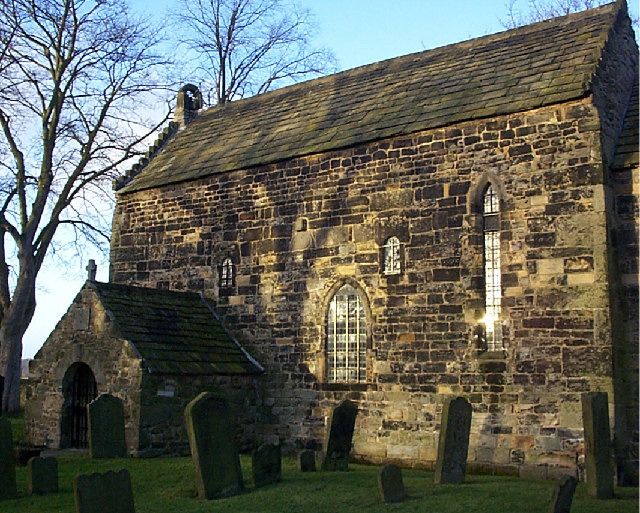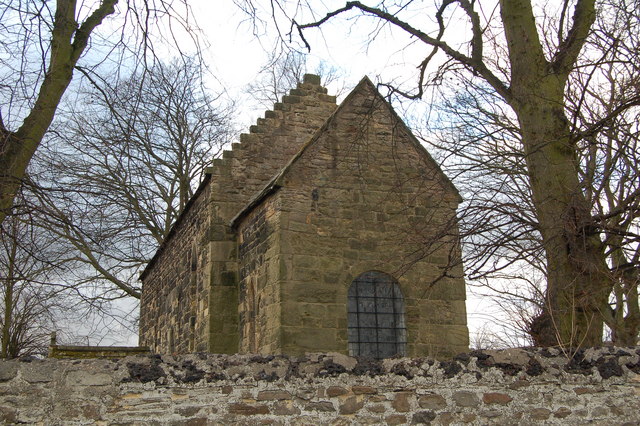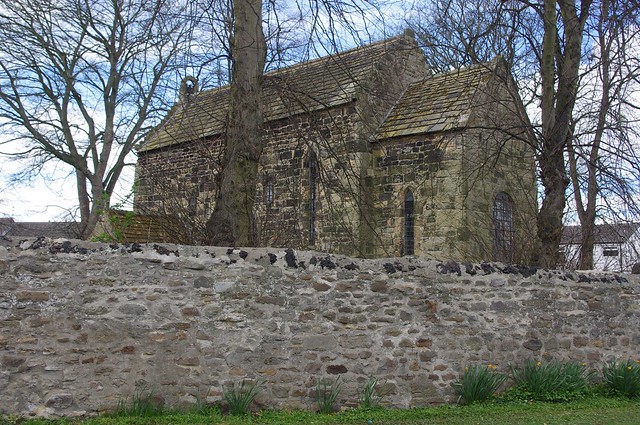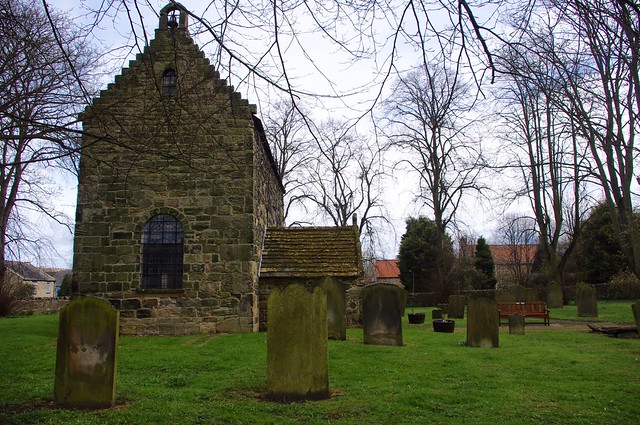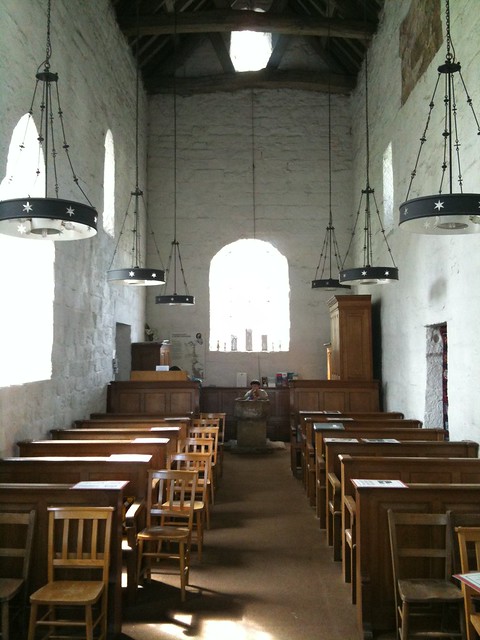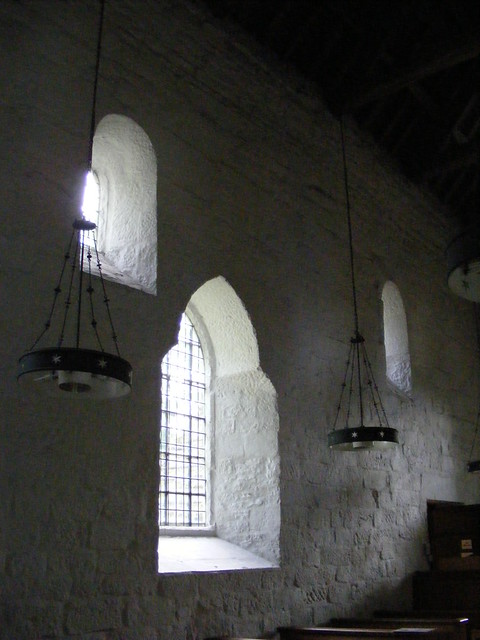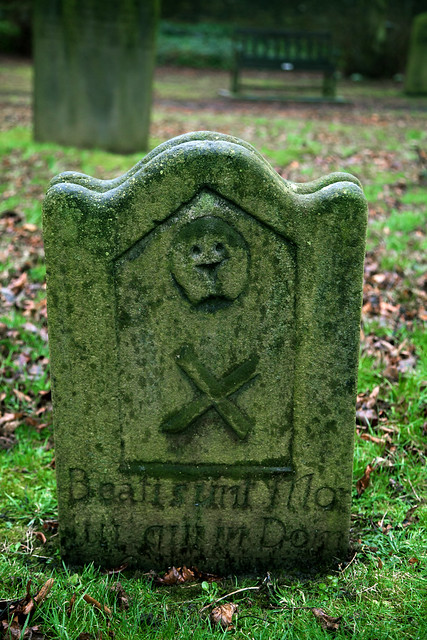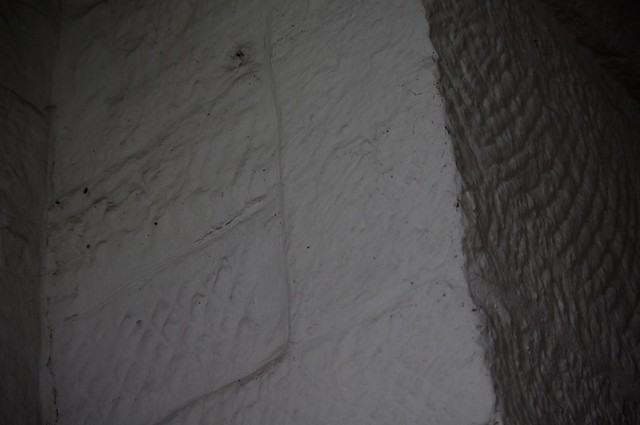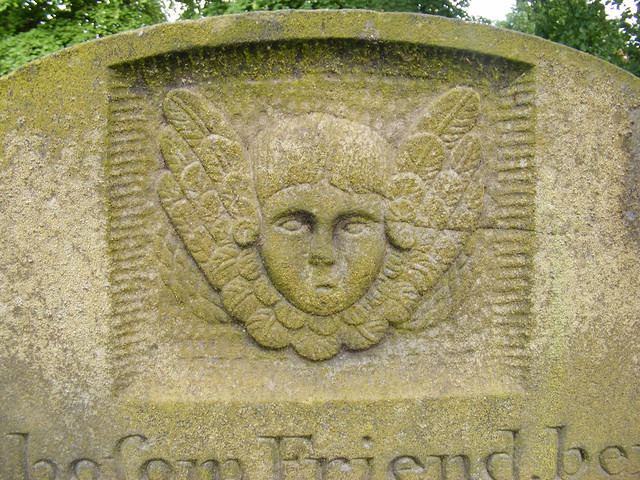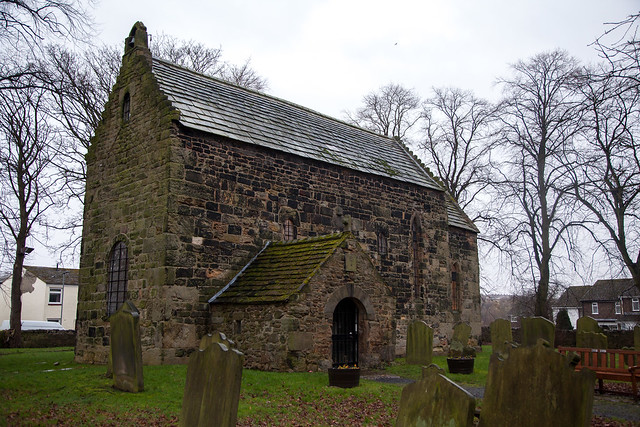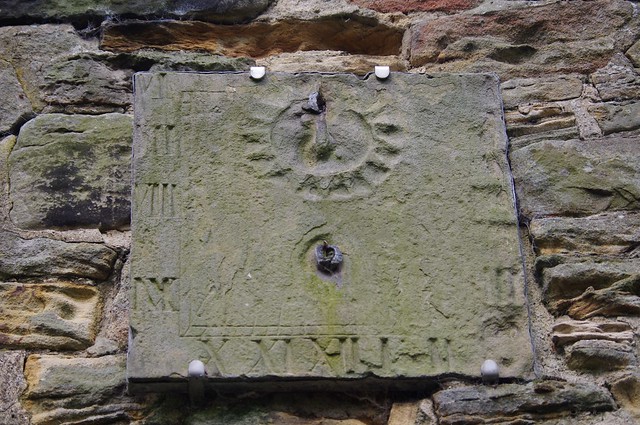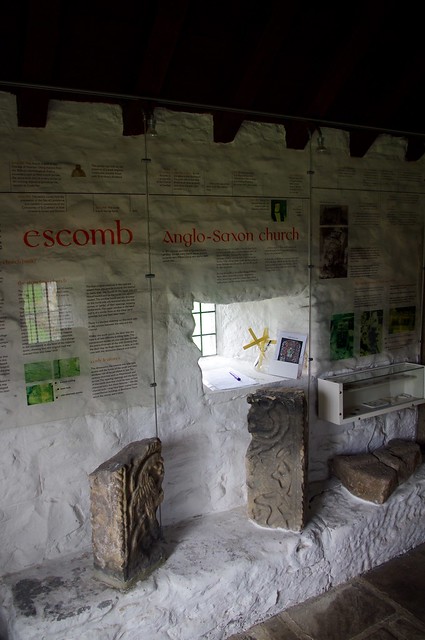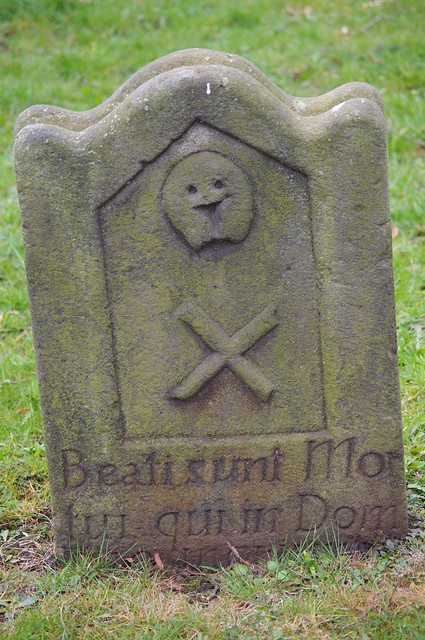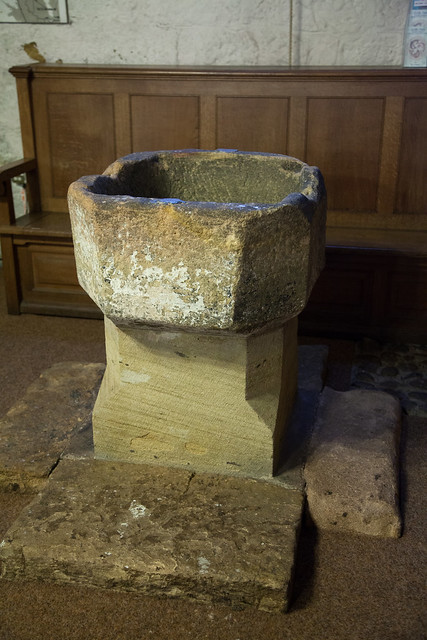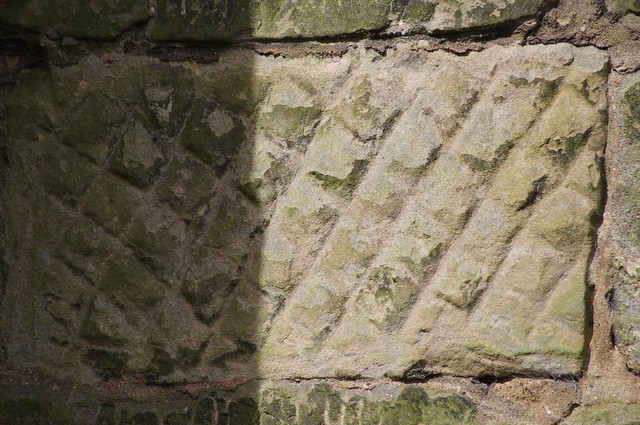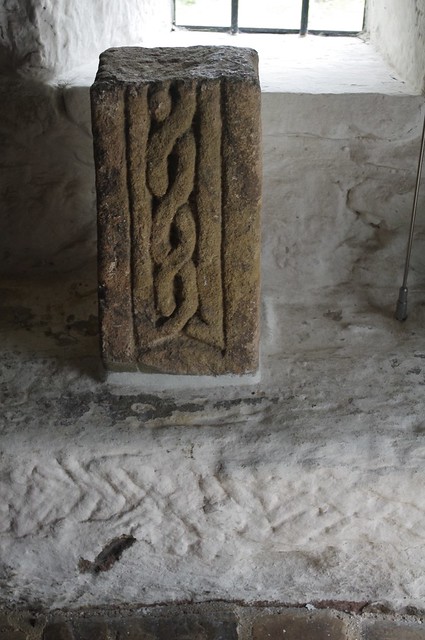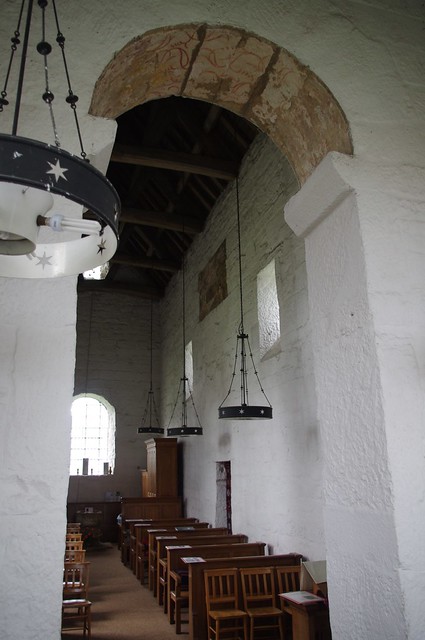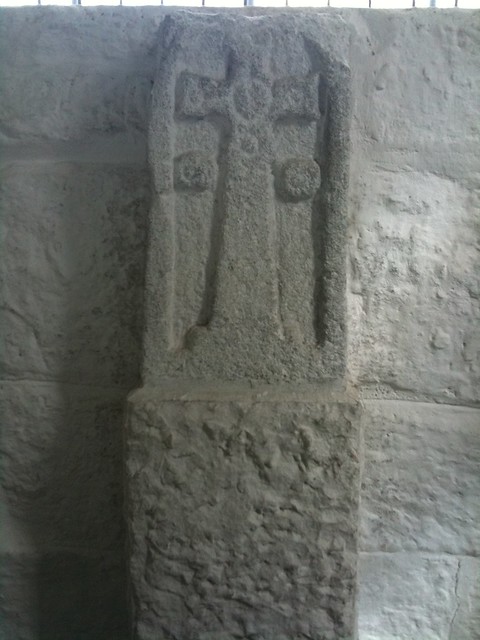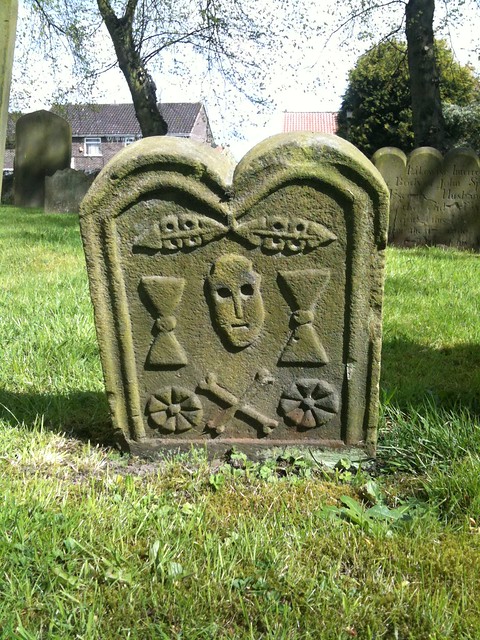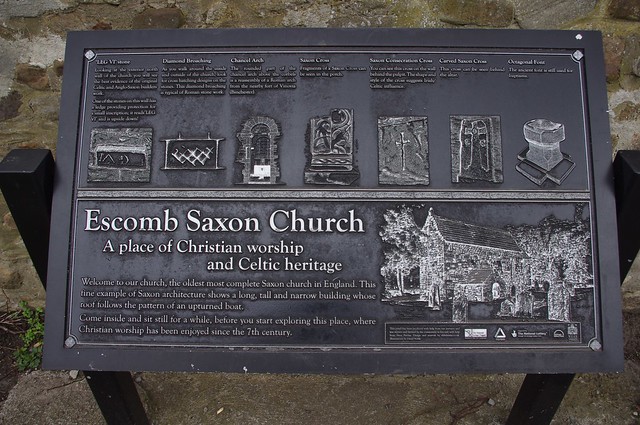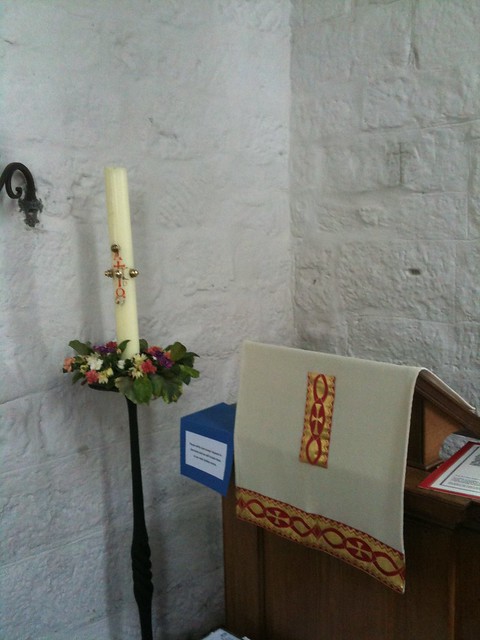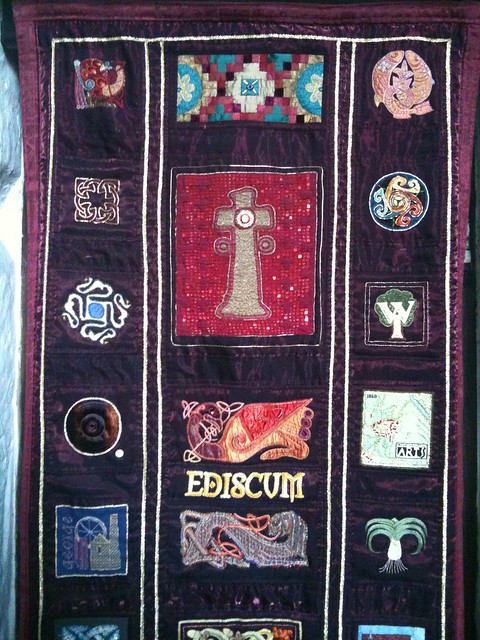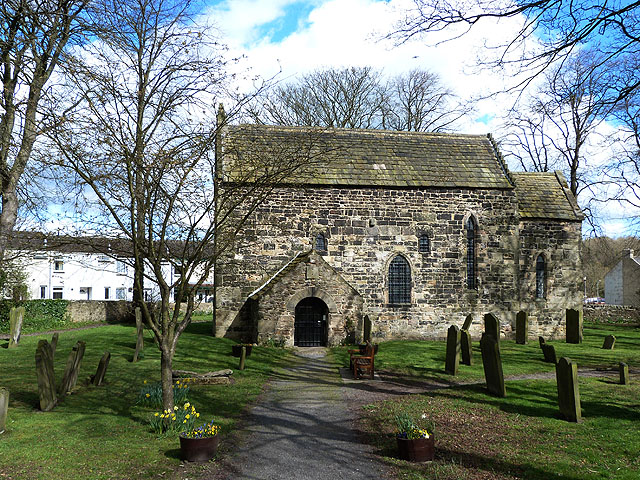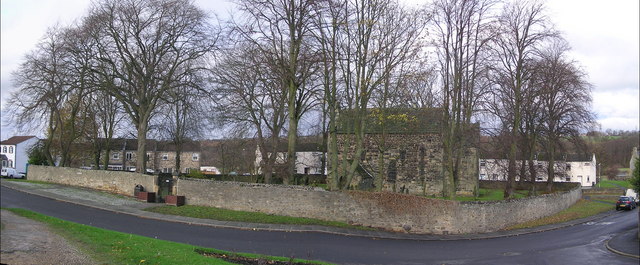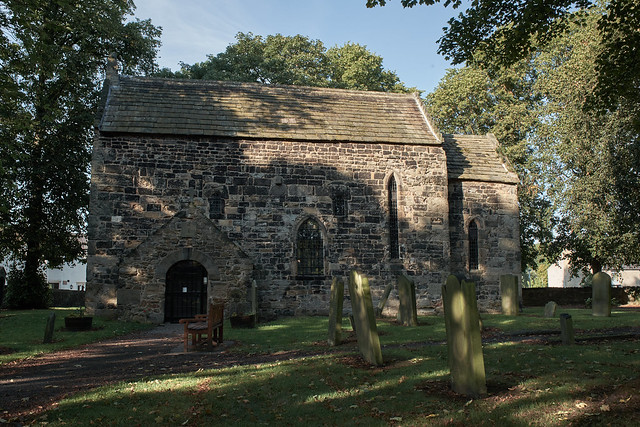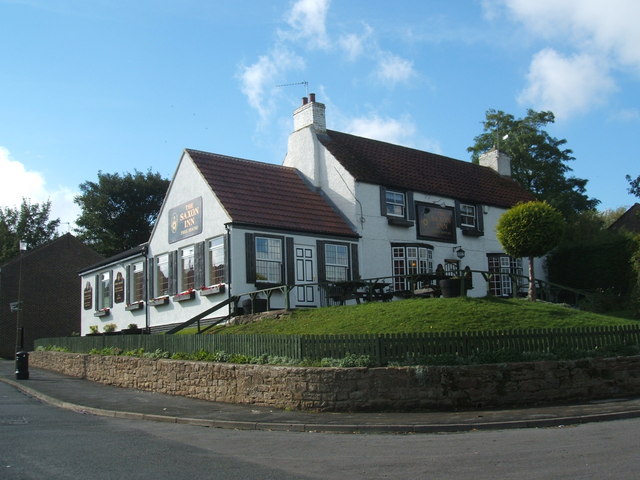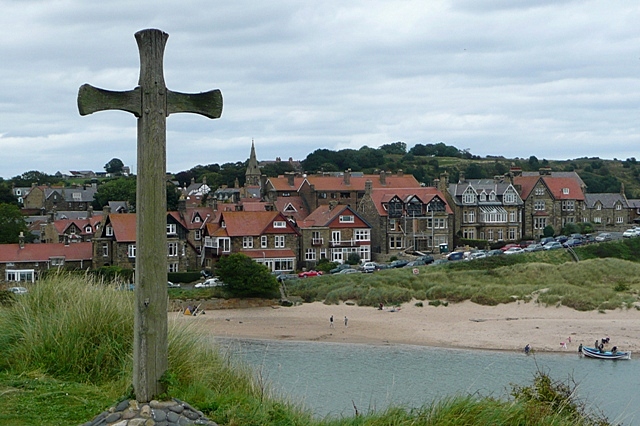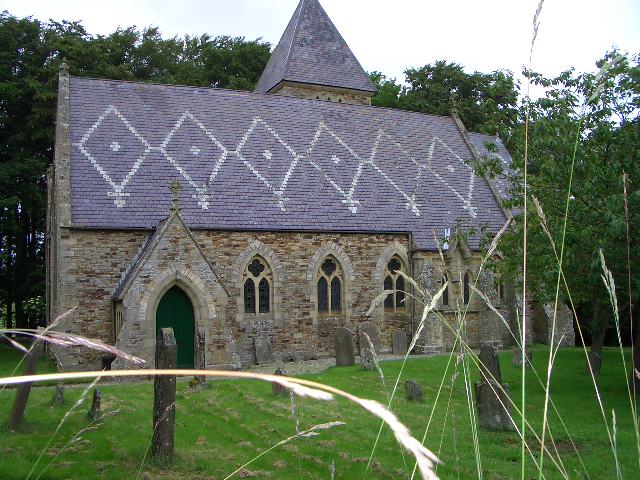Topics > County Durham > Escomb > Saxon Church, Escomb
Saxon Church, Escomb
The church was founded c.670-675. Much of the stone came from the nearby Roman Fort at Binchester. On the south wall is a 7th or early 8th Century sundial, and on the north wall is a reused Roman stone with the markings "LEG VI" (Sixth Legion) set upside down. The church was restored in 1875-1880 by RJ Johnson, and in 1965 by Sir Albert Richardson. It is Grade I listed on the National Heritage List for England.
St. John's, set in its circular churchyard, has been in continuous use since Anglo-Saxon times but for a brief interval in the nineteenth century when a new church was built nearby and the Anglo-Saxon fabric was allowed to lie derelict. It was partly unroofed from 1863 until 1867. The church is built of large roughly dressed, squared stones, with particularly large quoin-stones, many of which are up to 2 ft high and between 3 ft and 4 ft measured along the wall face.
Because Bede did not mention the church, some argued that it was not built until after his death (735). However, he only named churches which were associated with events which he recorded.
In his book (Anglo-Saxon Architecture, 1965) H.Taylor mentions that the early character of the building and its resemblance to other early work in Northumberland suggest that it was built in the period 650 to 800. Apart from the insertion of some medieval windows and the alteration of the south doorway (of which the eastern jamb is perhaps alone original), the body of the church stands now as it was built comprising a long rectangular nave, with five small windows high up in its lofty walls, and a square chancel, entered through an arch of imposing design.
Above the sundial is a projecting animal’s head. Internally the most impressive feature is the tall, narrow chancel arch, the jambs of the head being formed of stones that pass through the full thickness of the wall. It has been noted that the southern impost of this arch is reminiscent of one of the gateways of the Roman fort of Chesters on the Roman wall, in this case supporting the theory that stones were removed from the neighbouring fort of Vinovia (Binchester). Many of the stones exhibit Roman tooling, which is a common occurrence with Anglo-Saxon church buildings. Eaton in his book relating to the re-use of Roman stonework mentions the chancel arch of typical Roman form, tall with massive through-stone jambs, simple chamfered imposts and precision-cut, radial voussoirs, and unlike the non-radial voussoirs that the Anglo-Saxons typically manufactured.
In the restoration of 1880 there were found to be a number of delicately carved fragments of cross-shafts of the high quality commonly assigned to the Hexham school. These were found built into the gables, doubtless at earlier restorations.
Internally the nave measures 43 ft 6in by 14 ft 6in, and its walls are 2 ft 4in thick and approx. 23 ft high; the chancel is 10 ft square. The chancel arch is 5 ft 3in wide and 15 ft high, measured from the floor of the nave.
The church is one of only three complete Anglo-Saxon churches remaining in England.
Visit the page: Escomb Church for references and further details. You can contribute to this article on Wikipedia.

from https://historicengland.org.u…
THE SAXON CHURCH - Escomb - List Entry
- "Parish church. C7 with C14 porch and some C13 and C19 windows. Eaves raised at unknown date. Restored 1875-80 by RJ Johnson and 1965 by Sir Albert Richardson. MATERIALS: irregular …
Added by
Simon Cotterill

from Youtube (youtube)
Escomb Saxon Church 675 A.D Bishop Auckland County Durham
Pinned by Simon Cotterill

from https://escombesaxonchurch.wo…
Escomb Saxon Church
- "Official Website for one of the most complete Saxon Churches in Europe"
Added by
Simon Cotterill
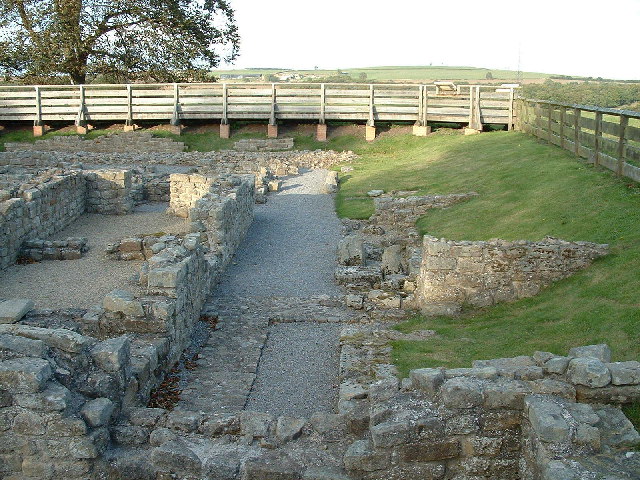
Co-Curate Page
Vinovia, Binchester Roman Fort
- Overview About Vinovia Map Street View Vinovia was a Roman Fort established c.80 AD, located about a mile north of Bishop Auckland in County Durham. It was situated on Dere …


from https://historicengland.org.u…
THE SAXON CHURCH - Escomb - List Entry
- "Parish church. C7 with C14 porch and some C13 and C19 windows. Eaves raised at unknown date. Restored 1875-80 by RJ Johnson and 1965 by Sir Albert Richardson. MATERIALS: irregular …
Added by
Simon Cotterill

from Youtube (youtube)
Escomb Saxon Church 675 A.D Bishop Auckland County Durham
Pinned by Simon Cotterill

from https://escombesaxonchurch.wo…
Escomb Saxon Church
- "Official Website for one of the most complete Saxon Churches in Europe"
Added by
Simon Cotterill

Co-Curate Page
Vinovia, Binchester Roman Fort
- Overview About Vinovia Map Street View Vinovia was a Roman Fort established c.80 AD, located about a mile north of Bishop Auckland in County Durham. It was situated on Dere …
List number: 1292122
County: County Durham
Post code: DL14 7SY
Wikipedia: Escomb Church
Grid ref: NZ1892830141
